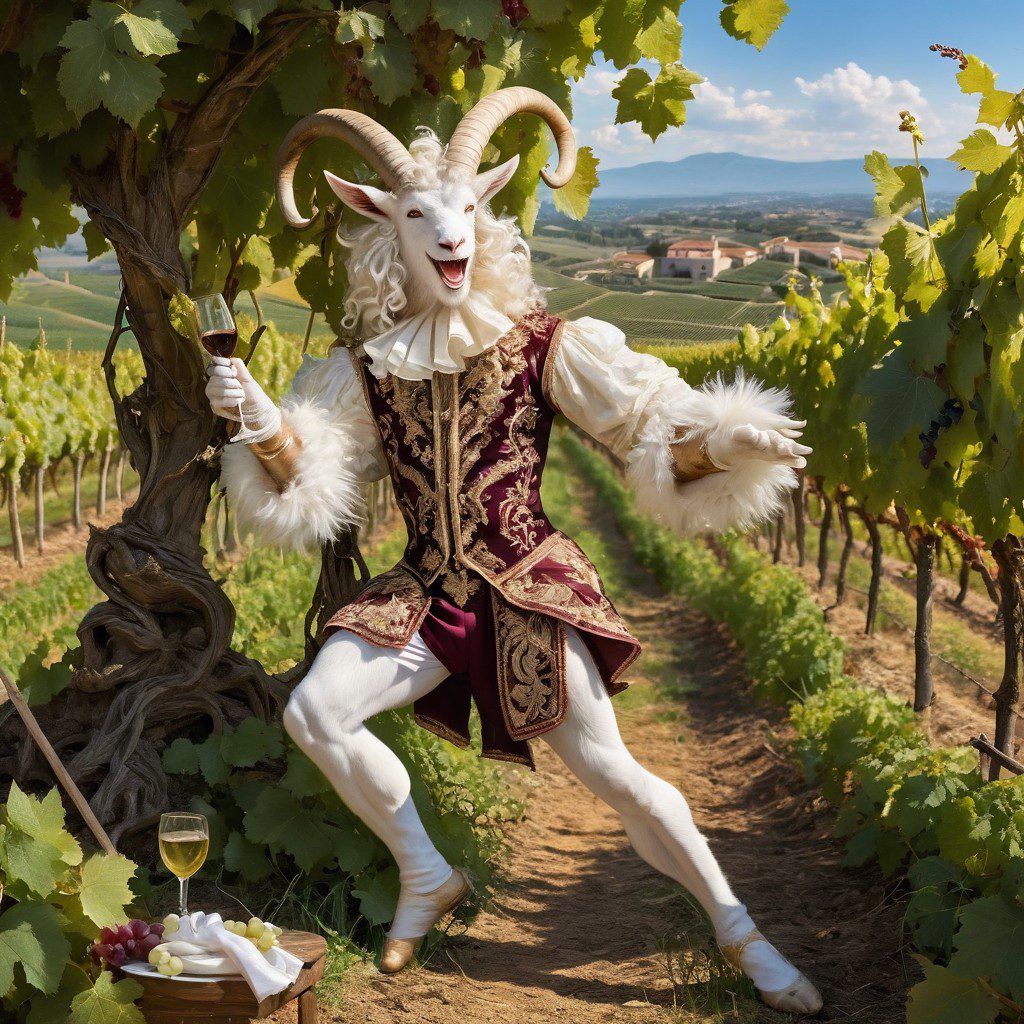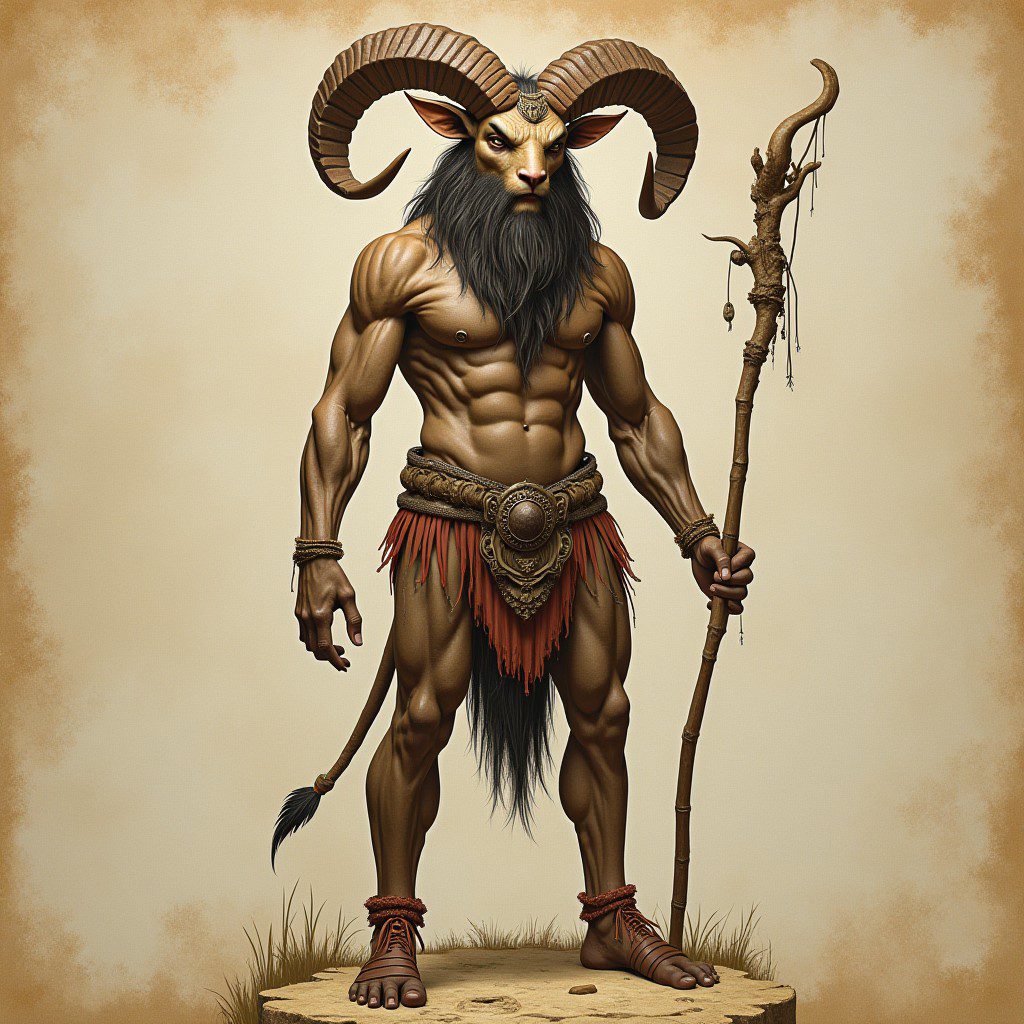Satyrs: The Mischievous Spirits of Greek Mythology

Satyrs are one of the most iconic and mischievous creatures from Greek mythology. These half-man, half-goat beings, known for their wild, carefree nature, symbolize the uninhibited and primal forces of the natural world. Satyrs are companions of Dionysus, the god of wine, revelry, and ecstasy, and their myths often revolve around hedonistic pleasures—drinking, dancing, and chasing nymphs. Yet, beyond their revelrous image, satyrs also carry a deeper symbolic significance, representing the untamed aspects of human nature and the tension between civilization and the wilderness.
Origins and Cultural History
Satyrs first appear in Greek mythology as minor woodland deities, deeply connected to the natural world. Their earliest depictions show them as wild creatures, part of the retinue of Dionysus. Like their god, satyrs are heavily associated with wine, music, and uncontrolled desire. In early art, they often appear as fully human men with bestial traits—such as a horse’s tail or donkey ears—before later depictions morphed them into their more familiar goat-like form.
Satyrs are often confused or combined with fauns, their Roman equivalent, who similarly represented rustic fertility spirits. However, satyrs in Greek tradition tend to be more chaotic and lustful, while fauns in Roman mythology are more peaceful and contemplative.
While satyrs are most frequently portrayed as followers of Dionysus, they are also associated with Pan, the god of the wild. Pan himself shares many of their characteristics—his goat legs and horns becoming the defining features of satyrs in later art.
Satyrs in Classical Literature


Satyrs play a supporting role in many mythological tales, most often appearing in stories where Dionysus is a key figure. One of the most famous satyr characters in myth is Silenus, an older satyr and mentor to Dionysus. Unlike the younger satyrs, who are often depicted as foolish and drunken, Silenus is portrayed as wise, though still prone to bouts of inebriation.
In one well-known story, Silenus is captured by King Midas, who learns from him that the secret to happiness is to live a short life, for existence is filled with suffering. This encounter highlights the dual nature of satyrs—they are creatures of joy and indulgence but also carry wisdom about the darker truths of life.
Another famous reference to satyrs is the ancient genre of satyr plays, comedic performances that were often staged alongside tragic plays during festivals. These plays featured a chorus of satyrs who added comic relief to serious stories, often poking fun at the gods or engaging in bawdy humor. These plays reveal the satyrs’ duality as both agents of chaos and vehicles for deeper reflections on human nature.
Symbolism of the Satyr
Satyrs represent the untamed, animalistic side of humanity, the part that exists beyond the boundaries of civilization. In this way, they are deeply symbolic of the ancient Greek concept of eros (desire) and thumos (the spirited part of the soul). Their lives are governed by instinct and pleasure, unrestrained by social norms or moral codes. In their myths, satyrs often pursue sensual pleasures—chasing nymphs, drinking wine, and celebrating the joy of life.
However, their wildness is often contrasted with the structured, ordered world of the gods and mortals. They are a reminder of the inherent conflict between civilization and nature, reason and passion. Satyrs embody the belief that while indulgence can bring joy, it also brings chaos and potential destruction if left unchecked. In some myths, their behavior borders on dangerous—an ever-present threat to the stability of both gods and humans.
Satyrs in Modern Media
Satyrs, with their wild, carefree nature, have found a place in modern literature, film, and video games, often portrayed as humorous, mischievous, or even slightly dangerous creatures. Their image as carefree revelers has made them appealing characters in fantasy worlds, where their chaotic energy can add humor or tension.
- Literature: One of the most notable satyrs in modern literature is Grover Underwood from Rick Riordan’s Percy Jackson and the Olympians series. Grover, unlike traditional satyrs, is compassionate and loyal, working as a protector of demigods rather than an agent of chaos. However, he retains some of the classic satyr traits—particularly his love of nature and connection to the wilderness.
- Film and TV: Satyrs occasionally appear in films based on Greek mythology, such as the Percy Jackson film adaptations and Hercules (Disney’s animated version), where the satyr Philoctetes serves as Hercules’ trainer. In these versions, satyrs are often depicted as comic relief, their bawdy humor and mischievous behavior toned down for modern audiences, while still retaining their rustic charm.
- Video Games: Satyrs are common enemies in many fantasy video games, often appearing in titles like God of War and The Witcher series, where they retain their association with the wild. In God of War, for instance, they are fierce combatants, embodying the more aggressive and dangerous aspects of their mythological counterparts. In games, satyrs often take on the role of chaotic antagonists or side characters, their wild natures adding an element of unpredictability to the story.
- Art and Music: Satyrs also play a significant role in classical music and art. The composer Debussy’s Prelude to the Afternoon of a Faun was inspired by the myth of satyrs and fauns, emphasizing the dreamy, intoxicating allure of the woodland spirits. In visual art, satyrs have been a favorite subject for centuries, often depicted in Renaissance and Baroque paintings as symbols of nature’s wild, untamed energy.
Strengths and Weaknesses of the Satyr
Strengths:
- Natural Affinity: Satyrs are deeply connected to the natural world, possessing abilities that reflect their woodland origins. They are often depicted as able to communicate with animals, move stealthily through forests, and possess an intuitive understanding of nature’s rhythms.
- Mischief and Charm: Satyrs are masters of trickery and charm, often using their wits to manipulate others. Their ability to dance, play music (especially the pan flute), and weave seductive words makes them incredibly persuasive, particularly in luring people into indulgent pleasures.
- Immortal Revelers: As followers of Dionysus, satyrs are resistant to pain and exhaustion. They revel for days, their stamina fueled by divine wine and the spirit of celebration. This makes them difficult to wear down in physical or emotional battles, as they are nearly always in high spirits.
Weaknesses:
- Uncontrolled Desires: The satyrs’ greatest strength—unrestrained indulgence—is also their greatest weakness. Their desire for pleasure often blinds them to danger, leaving them vulnerable to manipulation or attack. They are easily distracted, which makes them ineffective in long-term strategies or sustained combat.
- Primal Instincts: Satyrs are ruled by their base instincts, making them impulsive and lacking in foresight. Their inability to control their urges often leads to their downfall, especially when they come into conflict with more disciplined or rational characters.
- Limited Power: While satyrs possess a connection to nature, they lack the divine power of other mythological creatures. They are often at the mercy of the gods and can be easily overpowered by more powerful beings.
The Enduring Legacy of the Satyr
The satyr’s dual nature—joyous reveler and chaotic trickster—has made it a lasting figure in myth and modern culture. As embodiments of both celebration and excess, they serve as a reminder of the fine line between enjoying life and being consumed by its pleasures. In Greek myth, satyrs were the perfect companions to Dionysus, representing the carefree abandon of the divine revelry, but their antics also warned of the dangers of losing oneself to excess.
Whether as wise mentors like Silenus or comical sidekicks like Grover, satyrs continue to entertain and fascinate. They remind us of the untamed forces within all of us—our desires for freedom, pleasure, and connection to nature—and the delicate balance we must maintain between indulgence and restraint. Through their stories, we glimpse both the beauty and the peril of living a life unfettered by rules or responsibility.
